How Philips is revolutionizing healthcare one concept at a time with Justinmind

We spoke to Philips Research about using Justinmind to demonstrate new concepts for the healthcare setting. Read all about his story!
Boris De Ruyter is an endowed professor who’s been teaching for a number of years at the University of Nijmegen in the Netherlands. He also works for Philips Research. An important drive behind Boris’s work is a vision known as Ambient Intelligence, abbreviated to (AmI). AmI strives to make technology practical and human centered.
And what any UXer worth their salt knows is, in the Digital Age people want more than just technology, they want solutions. This requires a high degree of research and user testing. When he wants to test his concepts in the form of an app, Justinmind is Boris’s go-to tool.
We spoke to Boris to find out more about his line of work and the type of projects he works on in Justinmind.
In our chat with Boris, he told us about the kind of research he does and the methodology by which he designs his app prototypes. He told us that he regularly frequents AmI international conferences. AmI is a vision that was born in Philips and is shared by companies and institutions worldwide.
AmI is a vision for future technology that combines both the fields of AI and IoT. It was born out of a need to put the rapid technological advancements made throughout the last decades into a human context.
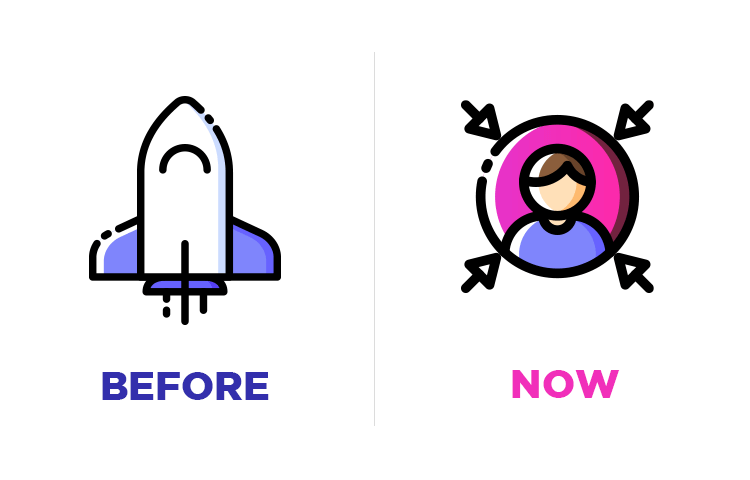
As Boris pointed out, many electrical products used to carry a checklist of features that earmarked the latest technology. He then provided us with the contrasting, modern context of AmI as not being about the technology push, but rather the answer to it.
Ambient Intelligence is all about the user experience. In this vision, new technology isn’t developed just for the sake of technological advancement, but for the user. Amen!
AmI is about making technology in the home or the hospital sensitive to the needs of the occupant.
Some basic examples that could be considered an early form of AmI would be Amazon’s Alexa and Apple’s Siri. But this is really just the basics of what Ambient Intelligence is really all about and where it’s going in the future.
Just as Philips first started off as Royal Philips Electronics, producing audio and electronic products, AmI has also changed to reflect the more practical demands of society. Philips went from being an audio and electronics company to focusing more on the healthcare part and has produced important advancements in the field of explorative medicine such as the Brilliance 40-Slice CT Scanner and is a big player in the medical world.

The goal of AmI also shifted. Initially, it was all very focused on the home and parts of the house, such as the living room. It revolved around connecting consumerist items, such as TVs, but later on it started moving more towards a medical and occupational setting as well.
The AmI project successfully received funding from the EU, with several research programs being started as a result. One of those research programs, which still carries on to this day, is called the Ambient Assisted Living program. Its decree is to help the elderly in maintaining an independent lifestyle.
One such example of a certain type of technology that helps with that can be seen today with the ElliQ robot. ElliQ was designed to assist elderly people in their day-to-day lives at home.
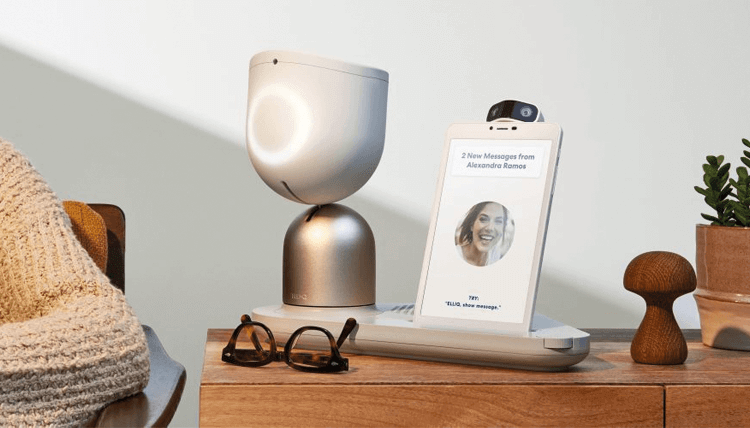
Boris’s role involves studying the effects and impact of technological applications on people’s lives. His research goal is to devise new concepts based on improving the user’s experience, as well as creating options for future business opportunities.
"It’s a way of creating options for business. If a concept contributes to our vision for improving people’s lives and it has a good business model behind it, the rest of the organization will pick it up."
If the company decides to develop an idea, it then passes from research into development. As Philips is a very large organization, Boris took the time to explain to us briefly how an innovation trajectory looks.
After his research department comes the pre-development department who would then have the task of making a “first of a kind”, or else developing the actual app after it’s been approved by Boris’s research team.
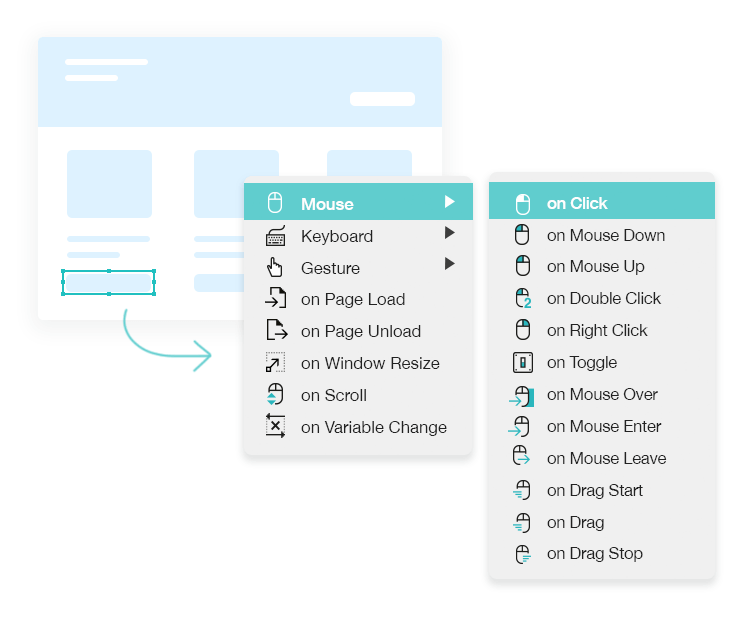
That brings us onto the importance of functionality and interaction. One of the essential features of Justinmind that Boris found very helpful was the possibility of adding functionality and interaction to prototypes. The reason? To demonstrate research concepts.
Many of the solutions the research team devises are presented as concepts, which means they need a way to present them. And what better way of presenting a technological concept than an interactive prototype? As Boris says himself:
“People will typically have some visualizations for an app [...] but I’m more interested in the concept that also has some level of functionality”.
As these concepts are to provide real solutions to real people, Boris and his team are more interested in demonstrating functionality, rather than just showing a static image of a design. It’s the interaction that brings a concept to life, that helps people understand what it is you want to develop and it’s interaction that gets buy in.
“And that’s why I think justinmind’s perfect tool! It really allows you to not just create the visualization of an app or concept you have in mind, but also show how it would work [...] some of the interactions you could implement with it and I think that’s where it differs from any other tool.”
When telling us about his most recent prototype, Boris informed us that he couldn’t reveal too much about the project, but did elaborate on his experience of using the data masters feature of Justinmind.
As well as adding the typical elements such as buttons and widgets to his app designs and linking to screens, he also added reusable lists.

The idea was that the user of the app would move items from one list to the other to create a shortlist of to-do items.
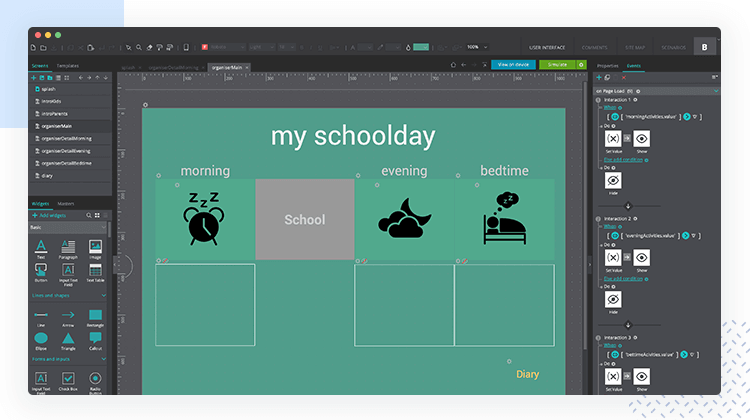
This information then had to be reused in subsequent screens to show that the previous information that had been selected, something for which the data masters feature was incredibly helpful.
As soon as the research team in Philips are able to embody their concept in the form of an app, like the one above, they have to share it with other teams in the organization ASAP. For Boris, using Justinmind to share his latest project was easy.
He shared it with his 6 team members, but also shared it remotely with an international management panel with different members located in various time zones around the world. They ended up sharing it with different stakeholders in various Philips offices worldwide.
“If you just show a static picture, it doesn’t carry the same weight, because the interaction part isn’t there. It’s the interaction part that makes a difference.”
The fact that all these stakeholders were able to witness all the interactions and behaviors of Boris’s prototype in real time made a huge difference. He was instantly able to demonstrate his concept in the most efficient manner possible, and in a way that made it real and tangible.

Boris is definitely someone who knows his way around Justinmind. In fact, he uses it regularly in his university classes in Nijmegen. Due to the fact that he often uses the tool when teaching his classes, he’s amassed quite a wealth of knowledge of all its features.
When we asked him why he chose our tool, he responded that he’d been looking around for a tool that was intuitive and could add interaction to prototypes
“I rapidly came to the conclusion that it was the tool my students should use.”
However, even a Justinmind pro such as Boris found it a little difficult when he was given just three days to implement a concept. Despite Boris’s calm and witty demeanor as he recollects the tight deadline, it certainly sounded like a stressful push!
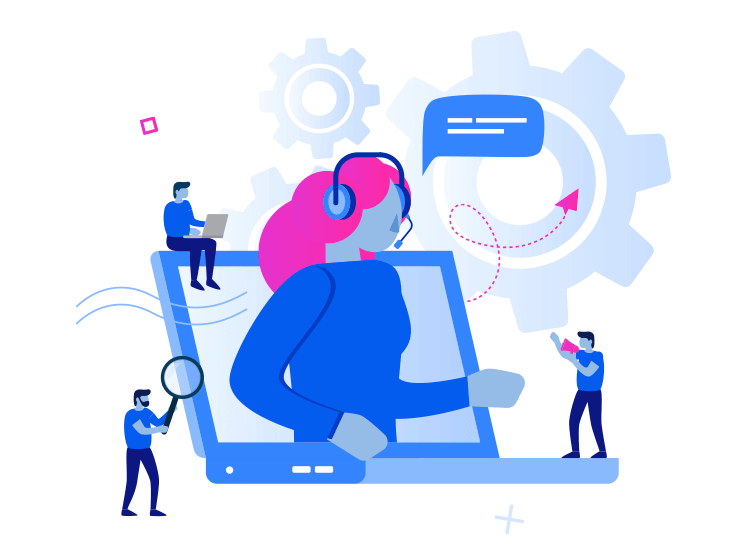
“With some of the support that I got online from your support team, it was possible to implement the whole thing in two days!”
Nonetheless, Boris informed us that he was indeed able to get his concept to prototype within two days. Using Justinmind’s data masters feature, and with the help of the support team, he actually got over the finish line with time to spare.
So what’s on the horizon for the company that produced the first X-Ray tube? According to Boris, Philips is all about the healthcare continuum. For them, prevention and rehabilitation are just as key to the process as treatment, that’s why they focus on all stages of the process. This ranges from disease prevention, to treatment, to rehabilitation and even to bringing technology into the home to help patients in recovering from illnesses.
So for Boris and his research team, the care begins even before the user becomes a patient. That offers an opportunity to find solutions to prevent them from becoming a patient in the first place.
Boris’s case can help us appreciate just how important research is to the user experience. It also shows how important it is to test and validate our concepts before we even think about development, and that’s what Justinmind is all about.
Another important lesson we can take away from Boris’s story, is how important it is to be able to demonstrate functionality in a prototype when sharing it with stakeholders. Because, at the end of the day, nothing demonstrates a concept quite like the concept itself.